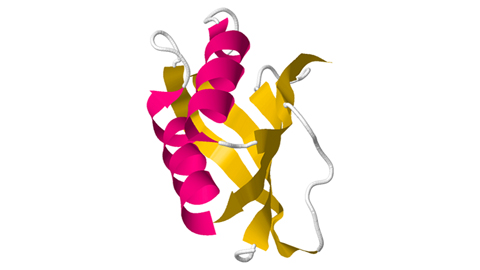Proteomics study isolates drug targets
Target identification is a major stage of early drug development — the point when researchers identify a biological element implicated in a disease that can be regulated by a therapeutic agent.
One research team in Germany has recently focused on myeloid-derived suppressor cells, or MDSCs, which are blood cells that are not fully differentiated. These cells suppress immune cell activities and promote cancer, infection, and inflammatory diseases. By screening MDSCs from mice, the researchers took the first step in identifying potential targets that can modulate MDSC activity.

Johannes Krumm, a scientist at OmicScouts GmbH, and Bernhard Küster, a professor at the Technical University of Munich, collaborated with the pharmaceutical firm Merck & Co. on the study. They recently published their findings in the journal Molecular & Cellular Proteomics.
The research team used high throughput screening, a technique that allowed them to cross-test large quantities of compounds against several factors to identify potential drug targets. The screening narrowed the potential targets from 20,818 compounds in the MDSC mice cells to 104 compounds that also modulated MDSC activity in human cells.
Krumm and Küster both hope that this paper “motivates further research groups and biotech/pharma companies to consider proteomics as a tool for drug discovery,” they wrote in an email.
Proteomics combines biological assays and computer software to analyze large numbers of proteins and their associated interactions. This characterization explores the whole data set and can uncover patterns that merit further investigation.
“The strong point about proteomics is that no initial hypothesis is needed,” Krumm and Küster wrote.
In this study, their data showed that an unknown compound suppressed MDSC activity in the mice cells. They tested this compound in immunoassays with human cells where its immune activity ranged from no effect to strong effect. Following a round of proteomic analysis, they found that the active compound upregulated the expression of proteins responsible for cell detoxification; this led to a reduction in reactive oxygen species, which play a role in promoting various diseases, including cancer. By studying this pattern, the researchers determined that a strong potential mechanism of action for new drugs to modulate MDSC activity would be to upregulate proteins that reduce reactive oxygen species.
“We were rather surprised to see how selectively the active compound upregulated proteins associated with detoxification functions,” Krumm and Küster wrote.
In their analysis, they found two proteins that closely upregulated MDSC activity: Acylphosphatase 1, also known as ACYP1, and a HLA class II histocompatibility antigen gamma chain protein, also known as CD74.
In the future, drug developers looking to target MDSC immunosuppression can target the downregulation of ACYP1 and CD74 to attack MDSCs. This study is “a good example for how proteomics can be used for drug discovery in general and in mode of action hypothesis in particular,” Krumm and Küster wrote.
“By making all data available to the public,” they concluded, “we hope that biologists in the field of MDSC will find our data and chemical tool compounds useful and enriching to their own research.”
Enjoy reading ASBMB Today?
Become a member to receive the print edition four times a year and the digital edition monthly.
Learn moreGet the latest from ASBMB Today
Enter your email address, and we’ll send you a weekly email with recent articles, interviews and more.
Latest in Science
Science highlights or most popular articles

Fueling healthier aging, connecting metabolism stress and time
Biochemist Melanie McReynolds investigates how metabolism and stress shape the aging process. Her research on NAD+, a molecule central to cellular energy, reveals how maintaining its balance could promote healthier, longer lives.

Mapping proteins, one side chain at a time
Roland Dunbrack Jr. will receive the ASBMB DeLano Award for Computational Biosciences at the ASBMB Annual Meeting, March 7–10, just outside of Washington, D.C.

Exploring the link between lipids and longevity
Meng Wang will present her work on metabolism and aging at the ASBMB Annual Meeting, March 7-10, just outside of Washington, D.C.

Defining a ‘crucial gatekeeper’ of lipid metabolism
George Carman receives the Herbert Tabor Research Award at the ASBMB Annual Meeting, March 7–10, just outside of Washington, D.C.

The science of staying strong
Muscles power every movement, but they also tell the story of aging itself. Scientists are uncovering how strength fades, why some species resist it and what lifestyle and molecular clues could help preserve muscle health for life.

Bacteriophage protein could make queso fresco safer
Researchers characterized the structure and function of PlyP100, a bacteriophage protein that shows promise as a food-safe antimicrobial for preventing Listeria monocytogenes growth in fresh cheeses.

